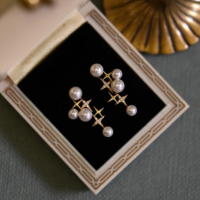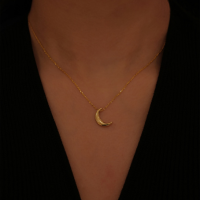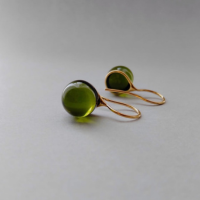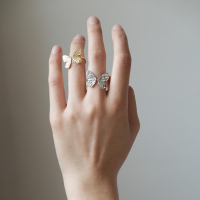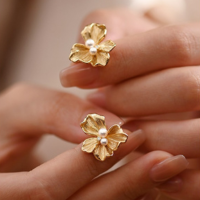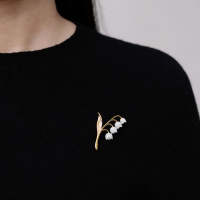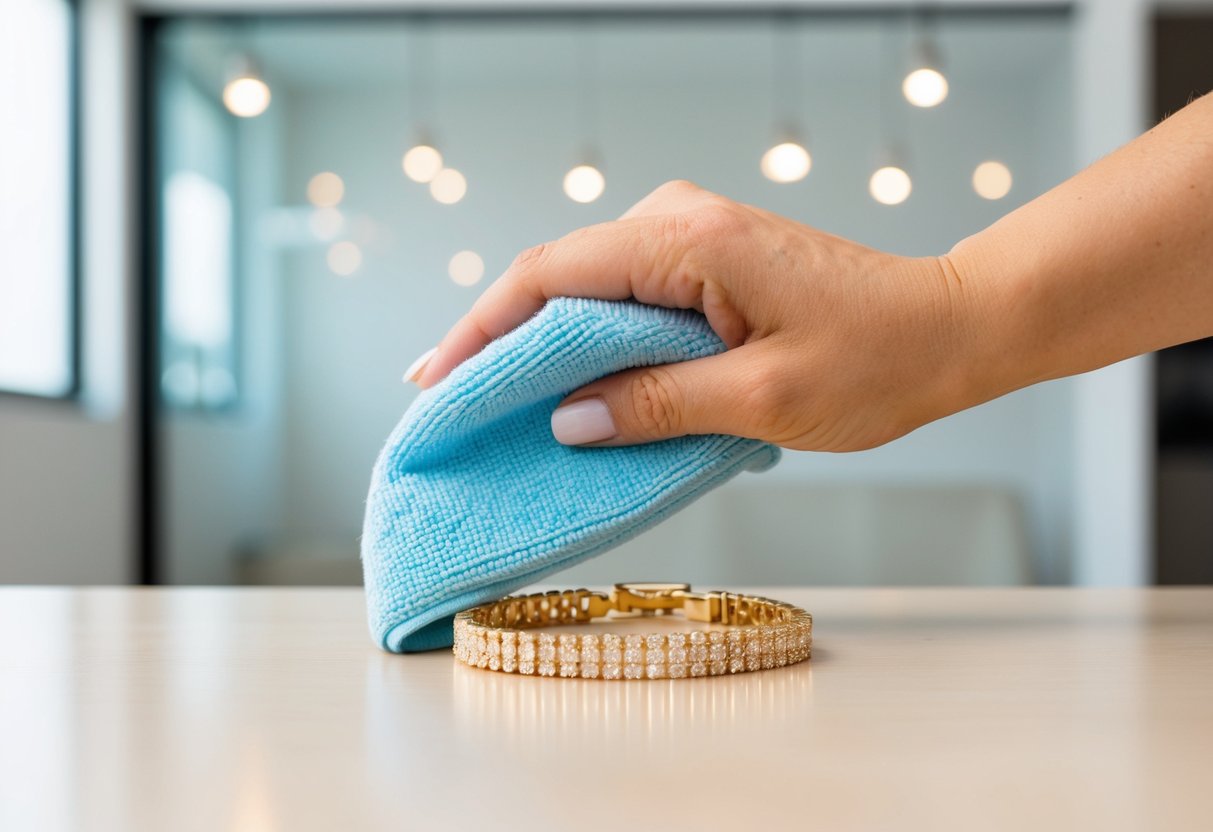
How to Clean Tarnished Jewelry
Check out our personalized jewelry collections! (kids drawing jewelry, coin jewelry, wire jewelry, fingerprint jewelry, handwriting jewelry, and more)
Is your favorite jewelry looking a little dull lately? It happens to the best of pieces over time. Tarnish is the culprit, and it can make even the most treasured rings and necklaces lose their charm.
We all want our jewelry to sparkle like new. Whether it’s a vintage piece or something special you wear every day, proper cleaning can work wonders. Let’s explore practical ways to remove tarnish and keep our jewelry looking stunning.
To keep our collection shining, knowing the basics of maintenance is key. Understanding what tarnish is and how it forms can help us take the right steps to clean and protect our jewelry. From simple DIY methods to understanding when professional cleaning is needed, we've got all the tips to ensure our pieces always impress.
Key Takeaways
- Clean your jewelry using simple steps to remove tarnish.
- Use recommended solutions based on jewelry materials.
- Protect jewelry with regular care and maintenance.
Understanding Tarnish on Jewelry
Tarnish is a common issue with various types of jewelry, affecting its appearance and quality. Let's explore what tarnish is, why it happens, and which materials are most susceptible.
What Is Tarnish?
Tarnish is a thin layer of corrosion that forms on the surface of metals. This usually shows up as a dull, grayish film. It's not the same as rust but occurs when metals react with sulfur, oxygen, or moisture in the air.
Think of tarnish as jewelry's version of patina. While a little patina can give an antique look, too much tarnish isn't appealing. It makes our pieces look worn out. Even though slight tarnishing adds some character, most of us prefer to keep jewelry shiny and clean.
Common Causes of Tarnishing
Several factors can speed up tarnishing. Humidity is a primary factor. When there's more moisture in the air, metals are likelier to react and tarnish. This is especially true in hot climates or during summer months.
Another common cause is contact with skin. Our skin contains oils and sweat, which can promote tarnishing. Personal care products like lotions, perfumes, and hairsprays can also contribute to this process. Chemicals in these products might react with the metals.
Pollution in the air can also be a factor. Urban environments with higher air pollution levels can lead to faster tarnishing rates due to higher sulfur compounds in the air.
Materials Prone to Tarnish
Some metals tarnish more than others. Silver is well-known for this problem. Even pure silver can tarnish over time. It's a soft and reactive metal, making it more susceptible.
Copper and brass are also prone to tarnish. These metals oxidize easily and develop a noticeable patina. Meanwhile, gold is generally resistant to tarnish but may show some effects if mixed with other metals in lower carat forms.
Jewelry with special coatings or finishes might be slightly more resistant, but no piece is completely immune. Regular cleaning helps maintain our jewelry in its best condition.
Preventative Measures for Jewelry Care
We know taking care of jewelry keeps it shining brightly. Correct storage and regular cleaning are crucial to ensure jewelry lasts.
Proper Jewelry Storage
Keeping jewelry safe starts with how we store it. Always use a soft-lined jewelry box or pouch. This helps prevent scratches. It's best to store necklaces hanging to avoid tangles. Rings and earrings can be placed in compartments.
Avoid stacking different pieces together. Moisture can tarnish jewelry, so store it in a cool, dry place away from bathrooms. Use silica gel packs to absorb excess moisture. Jewel bags with anti-tarnish strips can also help. These simple storage tips keep our pieces looking their best!
Routine Maintenance Tips
Routine care can extend the life of our jewelry. Regularly cleaning with a soft cloth can remove dirt and oils. For deeper cleaning, a mix of mild dish soap and warm water works well. Gently scrub with a soft toothbrush and rinse thoroughly.
Jewelry shouldn't be worn while swimming or showering. Chemicals in pools and soaps can dull or damage finishes. We should inspect for loose stones or clasps regularly. Getting professional cleanings occasionally also ensures everything stays secure and sparkling. An ounce of prevention keeps our collection in great shape!
DIY Cleaning Solutions
Let's explore some easy at-home solutions to help restore the shine to your beloved jewelry items. These methods involve common household ingredients and don't require any special tools. Always test on a small area first to ensure the solution doesn't harm your jewelry.
Baking Soda and Water
Materials Needed:
- Baking soda
- Water
- A soft toothbrush
Mix baking soda and water to form a thick paste. Spread the mixture on the tarnished areas with your fingers. Using a soft toothbrush, work the paste into the jewelry's nooks and crannies. Be gentle to avoid scratching. After a few minutes, rinse thoroughly with warm water. Dry the jewelry with a soft cloth to bring out the shine.
This method works well for silver items, making them gleam once again. Baking soda helps lift tarnish due to its mild abrasive nature. Always ensure to rinse well so no baking soda residue remains, as this could cause further tarnishing over time.
White Vinegar and Baking Soda
Ingredients Required:
- White vinegar
- Baking soda
Place the jewelry in a small bowl. Cover it with a layer of baking soda, then pour white vinegar until it fizzes and covers everything. Let it soak for a maximum of two to three hours.
The bubbling reaction helps lift tarnish off the surfaces. Rinse the jewelry well under cold water once done. Use a soft brush if needed to remove any remaining residue. Dry with a soft cloth. This method is excellent for silver jewelry and doesn’t require any scrubbing.
Lemon Juice and Olive Oil
Items Needed:
- Lemon juice
- Olive oil
- Soft cloth
Combine one part lemon juice with two parts olive oil in a bowl. Use a soft cloth to apply this mix to the tarnished jewelry. Move in small, circular motions to wipe away tarnish stains. Once the tarnish is gone, rinse the jewelry in clean water to remove any lemon residue.
This solution is great for copper or brass jewelry since the lemon juice helps dissolve tarnish. Olive oil helps add a lustrous shine. Just remember to handle the jewelry gently and avoid over-saturating. Repeated use of this method might be necessary for heavily tarnished items.
Step-by-Step Cleaning Guide
Let's go through the essential steps for restoring your jewelry's shine. This involves gathering supplies, inspecting the pieces, cleaning efficiently, and ensuring they are polished and dry.
Gathering Necessary Supplies
First, we need to gather the right supplies. To do this effectively, we'll need a soft cloth, a bowl, mild dish soap, a soft-bristle toothbrush, and warm water. These items are typically easy to find at home or a local store.
For more delicate jewelry, we might also consider buying a jewelry cleaner designed for specific metals or stones. Having everything ready before starting makes the process smoother. It's important to choose materials wisely so we don't accidentally harm our treasured items.
We should also use gloves to protect our hands during cleaning. This helps prevent oils and dirt from transferring back to the jewelry.
Initial Jewelry Inspection
Before cleaning, let's examine the jewelry closely. Look for any signs of loose stones or damaged clasps. This step is crucial because some cleaning methods might worsen the damage.
Use a magnifying glass if needed. We want to ensure there aren't any cracks or broken parts. If a piece is delicate or has significant damage, we might consider consulting a professional jeweler.
Checking for these issues helps us decide the best cleaning method. It also prevents potential loss or further harm during the process.
The Cleaning Process
Now, we'll start cleaning. Mix a few drops of mild dish soap with warm water in a bowl. Soak the jewelry for 10-15 minutes. This helps loosen any dirt or grime.
Next, gently use the soft-bristle toothbrush to scrub the jewelry. Focus on intricate parts where dirt might hide. We recommend being gentle to avoid scratches or damage to fragile areas.
Rinse the jewelry thoroughly with clean water to remove soap residue. It's important to ensure that no cleaning solution is left before drying.
Drying and Polishing Techniques
Once cleaned, let's dry the jewelry immediately using a soft cloth. It's essential to pat dry, rather than rubbing, which can lead to scratches.
For polishing, use another clean, soft cloth. Buff the jewelry in small, circular motions to restore shine. If we have silver jewelry, a special silver polishing cloth might be useful.
It's important to keep polishing light and gentle to maintain the jewelry's integrity. Proper drying and polishing help preserve its luster and appearance over time. Avoid using harsh or abrasive materials during this step to keep our pieces looking their best.
Professional Cleaning and Care
At times, we might need help from a professional to keep our jewelry looking its best. Jewelers offer specialized services to maintain, clean, and restore our precious pieces.
When to Seek Professional Help
We may decide to seek professional help when our jewelry has stubborn stains or damage. If DIY methods don't work or if our jewelry is highly valuable or delicate, a professional cleaner is advisable.
Another reason is when metal pieces lose their luster. For instance, if our silver tarnishes beyond what a home solution can fix, professional cleaning can help. We should also consider professionals for periodic deep cleaning to prevent long-term damage. Regular professional cleaning ensures that settings remain secure and stones stay brilliant.
Services Offered by Jewelers
Jewelers provide a range of services to care for our jewelry. They perform ultrasonic cleaning, which uses sound waves to remove dirt. This method is excellent for thoroughly cleaning complex designs.
Jewelers also offer steam cleaning to target spots and stains. Polishing is another service that enhances the shine of metal pieces, making them look brand new.
For custom or vintage pieces, jewelers provide restoration services. They can fix broken parts or replace missing stones. Getting professional help ensures our jewelry remains as beautiful as the day we got it.
Natural vs. Chemical Cleaners
When cleaning tarnished jewelry, we have two main options: natural cleaners and chemical cleaners. Each has its benefits and drawbacks, which can affect the appearance and longevity of our jewelry pieces.
Pros and Cons of Natural Cleaners
Natural cleaners use everyday items like vinegar, baking soda, or lemon juice. Pros: They are gentle on jewelry, reducing the risk of damage, especially for delicate pieces. We've found them to be more eco-friendly and safe to use, as they often lack harsh chemicals.
Cons: Natural cleaners might not be as effective on heavy tarnish or stubborn stains. Additionally, using them can be time-intensive, sometimes requiring multiple attempts to achieve desired results. They might not always give jewelry the same level of shine as chemical cleaners.
Pros and Cons of Chemical Cleaners
Chemical cleaners are designed specifically for removing tarnish quickly and effectively. Pros: These cleaners work fast and efficiently, tackling even the toughest tarnish with ease. They're ideal for pieces that need a quick restoration or are heavily tarnished.
Cons: They can be harsh and might cause damage over time, especially if used on sensitive materials. Some jewelry could suffer discoloration or warping. Additionally, they might contain chemicals that aren't environmentally friendly, posing a risk to both health and the planet if not used carefully.
Long-Term Jewelry Protection Tips
To keep our jewelry in top condition, we should focus on everyday habits. Storing pieces in a cool, dry place is essential. A jewelry box with separate compartments or a soft pouch can prevent scratches and tangling.
It’s wise to remove jewelry before swimming or applying lotions and perfumes. Moisture and chemicals can speed up tarnishing. For extra protection, we might use anti-tarnish strips or bags. These simple additions can greatly prolong the life of our precious pieces and keep them looking as beautiful as the day we got them.
Frequently Asked Questions
We often get questions about how to clean tarnished jewelry. Our guide offers some effective methods for silver, gold, sterling silver, and costume jewelry. Using common household items, we can restore shine and brightness without harsh chemicals.
What are effective methods for cleaning tarnished home jewelry?
We can use baking soda and water to make a paste. Rub it gently on the jewelry with a soft cloth. Rinse and dry completely. Another option includes using mild dish soap with warm water. This works well for most types of jewelry.
Can you restore the shine of silver jewelry that has tarnished?
Yes, restoring tarnished silver jewelry can be done with a mix of vinegar and baking soda. Soak the silver in the mixture for a couple of hours, rinse, and polish with a soft cloth. This helps in bringing back its shine.
What is the best way to polish gold jewelry with tarnish?
For gold, we recommend using a solution of water and mild dish soap. Gently scrub the gold pieces with a soft toothbrush, rinse, and buff dry with a soft cloth. This keeps the gold shiny and prevents damage.
Are there safe techniques to clean tarnished sterling silver without causing damage?
We suggest using a paste made from cornstarch and water. Rub it onto the sterling silver with a damp cloth, let it dry, then buff with a more immense piece of cheesecloth or soft flannel. This method is gentle and effective.
How can you remove tarnish from costume jewelry without harsh chemicals?
To clean costume jewelry, we can use toothpaste that doesn't contain whitening agents. Gently scrub the jewelry with a soft brush, rinse it, and dry with a soft cloth. This method is gentle enough for delicate pieces.
What household items can be used to clean tarnished jewelry pieces?
Common household items like baking soda, vinegar, mild dish soap, and toothpaste can be effective. These items provide a simple way to clean most jewelry without causing harm. Always test a small area first to ensure it's safe.

